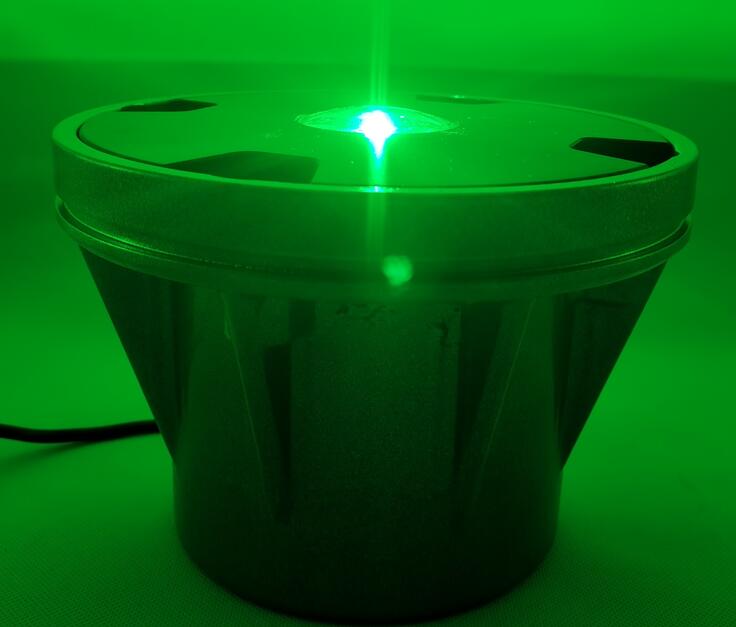Brightening the Skies: How Aviation LED Landing Lights Are Revolutionizing Flight Safety
The aviation industry has entered a new era of illumination with the widespread adoption of aviation LED landing lights. These advanced lighting systems have transformed nighttime operations, offering unparalleled brightness, reliability, and efficiency compared to traditional lighting technologies. This article explores the cutting-edge features, operational benefits, and future potential of aviation LED landing lights, demonstrating why they've become the gold standard for modern aircraft.
The LED Revolution in Aviation Lighting
Aviation LED landing lights represent a quantum leap forward from conventional lighting systems:
50,000+ hour lifespan (versus 500-1,000 hours for halogen)

Instant full brightness with no warm-up period
70-80% less power consumption than traditional lights
Vibration-resistant solid-state design perfect for aircraft environments
| aviation led landing lights |
Technical Superiority of Modern Systems
1. Unmatched Optical Performance
100,000+ lux illumination at runway threshold
Precision-engineered beam patterns (15°-45° adjustable)
Daylight-balanced 6000K color temperature
Uniform light distribution without hot spots
| aviation led landing light |
2. Ruggedized Aviation Design
MIL-SPEC shock and vibration resistance
IP67 waterproof rating for all-weather operation
-40°C to +85°C operational temperature range
Corrosion-resistant aerospace-grade materials
3. Smart Control Capabilities
Automatic brightness adjustment
Integrated health monitoring sensors
Wireless configuration options
Predictive maintenance alerts
Safety Enhancements
Aviation LED landing lights provide critical safety advantages:
Improved Runway Visibility
3x brighter illumination than legacy systems
Enhanced contrast in precipitation and fog
Better peripheral light coverage
Reduced Pilot Workload
Consistent light output throughout lifespan
No gradual dimming over time
Minimal glare and eye strain
Enhanced Aircraft Conspicuity
Superior visibility to other aircraft
Recognizable LED light signature
Improved collision avoidance
Operational Benefits for Airlines
The transition to aviation LED landing lights delivers measurable operational improvements:
1. Maintenance Reduction
10-year+ service life eliminates frequent bulb changes
Fewer spare parts required in inventory
Reduced labor hours for lighting maintenance
2. Fuel Efficiency Gains
Lower electrical load reduces generator demand
Weight savings from compact LED designs
Improved aircraft performance metrics
3. Dispatch Reliability
Eliminates lighting-related delays
Consistent performance in extreme conditions
Fewer MEL (Minimum Equipment List) entries
Regulatory Compliance
Modern aviation LED landing lights meet or exceed all major aviation standards:
FAA TSO-C96 (Technical Standard Order)
EASA CS-23/25 (Certification Specifications)
ICAO Annex 6 (Operation of Aircraft)
DO-160 (Environmental Conditions and Test Procedures)
Certification requires rigorous testing for:
Electromagnetic compatibility
Waterproof performance
Temperature extremes
Vibration and shock resistance
Installation Considerations
Retrofitting aviation LED landing lights requires attention to:
Electrical Compatibility
Voltage requirements (typically 28V aircraft systems)
Circuit protection specifications
Wiring harness inspections
Physical Integration
Heat dissipation management
Weight and balance calculations
Aerodynamic impact assessment
Regulatory Documentation
STC (Supplemental Type Certificate) compliance
Maintenance manual updates
Pilot operating handbook supplements
Maintenance Best Practices
To maximize performance of aviation LED landing lights:
Routine Inspections
Monthly lens cleanliness checks
Quarterly electrical connection verification
Annual photometric output testing
Cleaning Procedures
Approved aviation cleaning solutions only
Microfiber cloths to prevent scratching
Compressed air for housing ventilation
System Monitoring
Regular thermal imaging checks
Voltage drop measurements
Light pattern evaluation
Emerging Technologies
The future of aviation LED landing lights includes exciting developments:
Adaptive Beam Shaping
Automatic pattern adjustment based on phase of flight
Speed-dependent beam width optimization
Weather-adaptive intensity control
Advanced Materials
Self-healing lens coatings
Nanotechnology anti-icing surfaces
Graphene-enhanced thermal management
Integrated Systems
Combined landing/taxi/recognition lighting
Radar-assisted activation
Enhanced vision system integration
Environmental Advantages
Aviation LED landing lights support greener aviation:
Mercury-free and RoHS compliant
80% less energy consumption
Reduced waste from fewer replacements
Fully recyclable components
Industry Adoption Trends
The transition to aviation LED landing lights shows accelerating adoption:
95% of new commercial aircraft deliveries
70% of business jet fleet upgrades
50% of general aviation retrofits
100% of military next-gen aircraft
Aviation LED landing lights have fundamentally transformed aircraft illumination, setting new standards for safety, reliability, and efficiency. These advanced lighting solutions address the limitations of traditional technologies while introducing innovative features that enhance operational capabilities. As LED technology continues to evolve, we can expect even more sophisticated lighting systems that integrate seamlessly with next-generation avionics and flight deck systems.
For aircraft operators, the benefits of upgrading to aviation LED landing lights are clear: improved safety margins, reduced operating costs, and enhanced dispatch reliability. The aviation industry's widespread embrace of this technology demonstrates its vital role in modern aircraft operations. As we look to the future, LED lighting will undoubtedly remain at the forefront of aviation illumination, continuing to brighten the path to safer and more efficient air travel.
